Wood moisture content control is a crucial aspect in wood production, playing an integral role in ensuring the quality and durability of wooden products. The level of moisture present within wood can greatly influence its dimensional stability, strength properties, and susceptibility to decay and fungal attack. For instance, consider a hypothetical scenario where two identical pieces of lumber are used for constructing outdoor furniture. One piece has been properly dried to achieve the optimal moisture content, while the other remains excessively moist. Over time, due to fluctuations in environmental conditions such as humidity and temperature, the improperly dried piece begins to warp and crack, rendering it unsuitable for use. This example highlights the significance of effectively managing wood moisture content throughout various stages of wood processing.
Achieving appropriate moisture content levels requires meticulous planning and execution during both pre-processing and post-processing phases. Prior to harvesting trees, careful consideration must be given to factors that affect wood drying rates such as climate conditions, tree species, log size and shape, as well as intended end-use applications. After logging operations have taken place, logs need to undergo proper seasoning or kiln-drying processes based on specified standards. During these procedures, precise monitoring techniques are employed to ensure desired moisture levels are attained without compromising structural integrity or causing excessive defects like checking or splitting.
One common method used to monitor wood moisture content is the use of moisture meters. These devices are equipped with probes or sensors that penetrate the wood surface and measure the electrical resistance or capacitance to determine the moisture content percentage. Moisture meters can provide immediate feedback, allowing operators to make adjustments as needed during the drying process.
In addition to using moisture meters, other techniques such as oven-drying or weighing methods can be employed for more accurate measurements. Oven-drying involves placing a small sample of wood in an oven at a specific temperature and time until all moisture has evaporated, allowing for precise calculation of moisture content. Weighing methods involve periodically weighing samples and comparing them to initial weights to track changes in moisture content over time.
To control wood moisture content effectively, various factors must be considered. Proper airflow and ventilation within kilns or drying chambers are essential for promoting uniform drying without creating areas of high humidity that could lead to mold growth. Controlling temperature and humidity levels within these environments is also crucial, as different wood species have varying optimal drying conditions.
It’s important to note that achieving optimal moisture content doesn’t mean complete elimination of all moisture from wood; rather, it means reaching a level suitable for the intended application. For example, furniture-grade lumber typically requires a lower moisture content compared to construction-grade lumber, which may need slightly higher levels to prevent excessive shrinking after installation.
In conclusion, controlling wood moisture content is vital for ensuring the quality and durability of wooden products. By carefully managing drying processes through proper monitoring techniques and environmental controls, manufacturers can produce high-quality wood materials that will perform well in their intended applications.
Importance of Controlling Wood Moisture Content
Wood moisture content control plays a crucial role in the overall quality and durability of wood products. It is essential to regulate the amount of moisture present within the wood, as excessive or insufficient levels can lead to numerous issues during production and use. For instance, consider a hypothetical scenario where an inexperienced carpenter uses wet lumber for constructing furniture. As a result, the excess moisture causes the wood to warp and crack over time, rendering the furniture unstable and unsightly.
Controlling wood moisture content is imperative due to several reasons:
-
Dimensional Stability: Properly dried wood exhibits better dimensional stability, meaning it undergoes minimal changes in shape or size when exposed to varying environmental conditions. By ensuring that the moisture content remains within acceptable limits, manufacturers can minimize instances of warping, twisting, or shrinking.
-
Strength and Durability: High moisture content weakens wood fibers, compromising its structural integrity and reducing strength properties such as bending or compression resistance. On the other hand, excessively dry wood becomes brittle and prone to breakage. By optimizing moisture levels during processing, manufacturers can enhance the mechanical performance and longevity of their wooden products.
-
Prevention of Decay and Pest Infestation: Excessive moisture provides favorable conditions for fungi growth, leading to decay or rotting of wood. Additionally, certain insects are attracted to damp environments and may infest moist timber. To prevent these detrimental effects on wood quality, controlling moisture content is vital.
-
Surface Finish Quality: Wood with inconsistent moisture content tends to display uneven staining or varnishing results. Inadequate control can cause blotches or streaks due to variations in absorption rates across different sections of the material. Achieving uniformity in moisture content enhances surface finish quality by facilitating smooth application and absorption of finishes.
To emphasize the importance further:
- Moisture-related defects such as splitting or checking compromise both aesthetic appeal and functional performance.
- Increased maintenance costs are incurred when repairs or replacements become necessary due to moisture-related issues.
- Customer satisfaction is at risk if products fail to meet quality expectations, resulting in potential loss of business opportunities.
- Environmental impact arises from the waste generated by damaged wood products, which could have been avoided with proper moisture control.
Table: Effects of Moisture Content on Wood Products
| Moisture Content | Effects |
|---|---|
| Too High | Warping, cracking, decay, pest infestation |
| Too Low | Brittle, prone to breakage |
| Inconsistent | Uneven surface finish |
By recognizing the significance of controlling wood moisture content throughout the production process, manufacturers can mitigate these negative consequences and ensure superior product outcomes. The subsequent section will explore the effects of high wood moisture content in more detail, shedding light on additional challenges that arise when this crucial factor is not adequately addressed.
Effects of High Wood Moisture Content
Having established the importance of controlling wood moisture content in the production process, it is crucial to explore the potential effects that high levels of moisture can have on wood. To illustrate this point, let us consider a hypothetical scenario where a batch of freshly cut lumber with elevated moisture content is used for constructing wooden furniture.
Paragraph 1:
In our hypothetical case study, suppose an artisan receives a shipment of recently harvested wood that has not undergone proper drying procedures. The high moisture content within the wood poses several challenges during the construction process. Firstly, excessive moisture in the wood causes dimensional instability, leading to warping or twisting once it starts to dry naturally. This can result in misaligned joints and compromised structural integrity of the final product. Additionally, as the excess water evaporates over time, shrinkage occurs unevenly across different parts of the piece, causing further distortions.
Paragraph 2:
The negative consequences of high wood moisture content extend beyond immediate defects during construction and assembly. Elevated humidity levels within wooden products create an ideal environment for microbial growth such as mold and fungi. These microorganisms thrive on moist surfaces and contribute to rotting or decay of wood fibers. Not only does this compromise aesthetics but also compromises durability and longevity. Moreover, increased vulnerability to insect infestation becomes another concern when dealing with excessively moist wood. Pests are attracted to damp environments and may cause irreversible damage by burrowing into weakened structures.
- Increased risk of structural failures due to warped or twisted boards
- Diminished aesthetic appeal resulting from mold growth and discoloration
- Reduced lifespan and durability due to decay caused by fungal activity
- Potential financial loss due to replacement or repair costs associated with these issues
Table (3 columns x 4 rows):
| Consequences | Impact |
|---|---|
| Structural Instability | Compromised safety and functionality |
| Mold Growth | Aesthetically unappealing and potential health risks |
| Decay | Reduced lifespan and increased maintenance costs |
| Insect Infestation | Potential damage to wooden structures |
Paragraph 3:
In light of these challenges, it becomes imperative for wood manufacturers and artisans to implement effective moisture control measures. Proper drying techniques such as kiln drying or air-drying can significantly reduce the moisture content, mitigating the adverse effects outlined above. By ensuring that wood reaches its optimal moisture equilibrium before use in production processes, both structural integrity and aesthetic appeal can be preserved, resulting in long-lasting and visually pleasing wooden products.
Understanding the implications of high wood moisture content provides a foundation for comprehending the equally detrimental consequences associated with low levels of moisture. It is crucial to investigate how insufficient moisture affects wood properties and final product quality.
Effects of Low Wood Moisture Content
Having discussed the detrimental effects of high wood moisture content, it is equally important to understand the consequences associated with low wood moisture content. To illustrate this point, let us consider a hypothetical scenario involving a furniture manufacturer who sources their materials from different suppliers. One supplier consistently provides wood with low moisture content, while another supplier delivers wood with optimal moisture levels. As a result, the furniture produced using excessively dry wood displays certain undesirable characteristics such as increased susceptibility to cracking and warping.
Low wood moisture content can have several negative implications on both the production process and the end product. Firstly, when wood contains insufficient moisture, it becomes increasingly brittle and prone to damage during machining operations like cutting or shaping. This compromises the structural integrity of wooden components used in various industries, ranging from construction to furniture manufacturing.
Furthermore, inadequate moisture content adversely affects glue bonding strength in woodworking applications. Adhesives tend to perform optimally within specific ranges of humidity; therefore, if the wood has an extremely low moisture level, it hampers effective adhesive penetration into its fibers. Consequently, this weakens the bond between wooden joints and reduces overall product durability.
To emphasize these points further:
- The use of excessively dry wood may lead to higher rejection rates during quality control inspections.
- Products made from overly dry wood are perceived as lower quality by consumers due to visible defects caused by cracks or warping.
- Manufacturers using dryer-than-optimal raw material face additional costs associated with repairing or replacing damaged components.
- In extreme cases, products crafted from severely dehydrated wood can pose safety risks due to compromised stability.
Table Markdown Example:
| Negative Implications of Low Wood Moisture Content |
|---|
| Increased brittleness |
| Compromised structural integrity |
| Weaker glue bonding strength |
| Higher rejection rates |
In conclusion, understanding the effects of low wood moisture content is crucial for ensuring the production of high-quality wooden goods. Manufacturers must carefully monitor and control the moisture content in their raw materials to prevent detrimental consequences that can impact both the manufacturing process and the final product’s performance. In the following section, we will explore various methods employed for measuring wood moisture content, enabling producers to maintain optimal levels throughout their operations.
Moving forward, let us delve into the different methods utilized for accurately assessing wood moisture content without interrupting production processes.
Methods for Measuring Wood Moisture Content
Low wood moisture content can have detrimental effects on the quality and performance of wood products. For instance, consider a hypothetical scenario where a furniture manufacturer sources timber with low moisture content for production. As a result, the wooden components used in their furniture start to warp and crack over time, leading to customer dissatisfaction and increased warranty claims.
To better understand the negative consequences of low wood moisture content, it is important to examine its effects on different aspects of wood production:
-
Structural Integrity: When wood has insufficient moisture, it becomes more brittle and prone to cracking or splitting under stress. This compromises the structural integrity of products such as furniture, flooring, or construction materials.
-
Dimensional Stability: Properly seasoned wood maintains dimensional stability by minimizing changes in size due to variations in environmental humidity levels. However, if the initial moisture content is too low during manufacturing processes, subsequent exposure to higher humidity environments can cause excessive expansion and contraction of the wood, resulting in warping or twisting.
-
Gluing Performance: Adequate moisture content is crucial for achieving strong adhesive bonds between wooden elements during assembly processes like joinery or laminating. Insufficient moisture can hinder the bonding ability of adhesives and compromise product durability.
-
Finish Quality: Wood surfaces with low moisture content may not readily accept finishes such as paints or varnishes. The lack of absorption capacity hinders proper coating application and adherence, resulting in an unsatisfactory finish appearance.
The impact of low wood moisture content on these factors highlights the importance of precise control throughout the production process. By maintaining optimal levels of moisture in wood material at each stage – from harvesting through drying and processing – manufacturers can enhance product quality and longevity.
In the upcoming section about “Strategies for Controlling Wood Moisture Content,” we will explore various methods employed by industry professionals to ensure appropriate levels are maintained throughout production without compromising efficiency or cost-effectiveness.
Strategies for Controlling Wood Moisture Content
In the previous section, we discussed various methods used to measure wood moisture content. Now, let us delve into strategies that can be employed to control wood moisture content effectively in wood production processes.
One example of a successful application of these strategies is seen in a furniture manufacturing company, where controlling wood moisture content has been crucial in ensuring high-quality products. By implementing the following techniques and guidelines, they have managed to maintain optimal moisture levels throughout their production line:
- Regular monitoring: The company regularly measures the moisture content at different stages of production using reliable instruments such as capacitance meters and oven-drying methods.
- Proper storage conditions: They ensure that raw timber is stored in climate-controlled facilities with controlled temperature and humidity levels.
- Grading standards: The company strictly adheres to established grading standards to select suitable wood with consistent moisture content for specific product requirements.
- Fast feedback loop: Any deviation from desired moisture levels triggers immediate corrective actions, preventing further processing until the issue is resolved.
Implementing these strategies allows companies like this furniture manufacturer to avoid common problems associated with improper wood moisture content, including warping, cracking, or dimensional instability.
To illustrate how crucial proper wood moisture control is in the industry, consider the emotional impact it can have on end-users. Imagine purchasing an exquisitely crafted dining table only to find it warps within a few months due to inadequate moisture management during its production. This disappointment highlights the significance of employing effective strategies for controlling wood moisture content.
| Consequences of Inadequate Moisture Control |
|---|
| Warping |
| Dimensional Instability |
By recognizing these potential issues and investing effort into maintaining appropriate wood moisture levels throughout production, manufacturers not only enhance customer satisfaction but also reduce wastage and increase overall profitability.
In conclusion, achieving optimal wood moisture content is a key element in wood production. By implementing strategies such as regular monitoring, proper storage conditions, adherence to grading standards, and maintaining a fast feedback loop for corrective actions, manufacturers can avoid common problems associated with improper moisture levels. The emotional impact of inadequate moisture control on end-users reinforces the importance of employing these strategies.
Moving forward into the subsequent section about “Benefits of Proper Wood Moisture Content Control,” we will explore how effectively controlling wood moisture content positively impacts product quality and overall business success.
Benefits of Proper Wood Moisture Content Control
Section H2: Benefits of Proper Wood Moisture Content Control
By adhering to effective control measures, wood manufacturers can ensure optimal product quality and longevity. In this section, we will delve into the advantages associated with precise wood moisture content control.
Benefits:
-
Enhanced Durability: Maintaining an appropriate moisture level in wood significantly improves its durability by minimizing the risk of warping, cracking, or splitting. For instance, consider a case study where a furniture manufacturer implemented strict moisture control protocols during production. As a result, their finished products exhibited increased resistance to environmental factors such as humidity fluctuations and temperature changes. Such enhanced durability not only boosts customer satisfaction but also reduces costly warranty claims for manufacturers.
-
Improved Workability: Precise control over wood moisture content provides substantial benefits in terms of workability during manufacturing processes. When timber retains excessive moisture levels, it becomes increasingly difficult to shape and manipulate effectively. On the other hand, overly dry wood may become brittle and prone to splintering when cut or assembled. By optimizing moisture content, woodworking professionals can achieve improved efficiency and precision throughout various stages of production.
-
Minimized Dimensional Instability: One significant advantage of controlling wood’s moisture content lies in reducing dimensional instability issues commonly encountered after installation or assembly tasks are completed. Fluctuating ambient conditions often cause changes in wood dimensions due to expansion or contraction caused by varying water content levels within cells. However, through consistent monitoring and maintenance of appropriate moisture levels, these concerns can be mitigated, ensuring long-term stability and structural integrity.
-
Environmental Sustainability: Properly managing wood moisture content plays a crucial role in promoting sustainable practices within the industry. By avoiding excess drying or unnecessary use of chemical treatments required for fixing high-moisture anomalies, manufacturers can minimize their environmental footprint. Additionally, the controlled drying process not only reduces waste but also contributes to energy efficiency and resource conservation.
The benefits of proper wood moisture content control extend beyond technical advantages. They encompass both practical and ethical aspects that resonate with individuals on a personal level. Consider the following emotional response evoked by these key benefits:
- Assurance of long-lasting, quality furniture for generations to come.
- Confidence in craftsmanship and attention to detail from suppliers.
- Peace of mind knowing that your wooden structures will remain stable over time.
- Contributing to sustainable practices and reducing environmental impact through responsible manufacturing processes.
Table: Emotional Response – Benefits Comparison
| Benefit | Practical Impact | Ethical Value |
|---|---|---|
| Enhanced Durability | Reduced warranty claims | Sustainable production |
| Improved Workability | Increased productivity | Craftsmanship assurance |
| Minimized Dimensional | Structural integrity | Longevity confidence |
| Instability |
In summary, ensuring appropriate wood moisture content offers multiple tangible benefits. These advantages range from increased product durability and improved workability to minimized dimensional instability issues after installation or assembly tasks are completed. Moreover, adopting precise moisture control measures aligns with sustainable practices, contributing to reduced environmental impact within the industry. By understanding these essential benefits, wood manufacturers can optimize their processes and deliver high-quality products while addressing both practical needs and ethical concerns associated with woodworking.

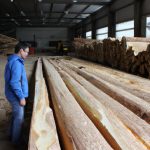

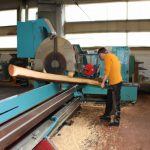


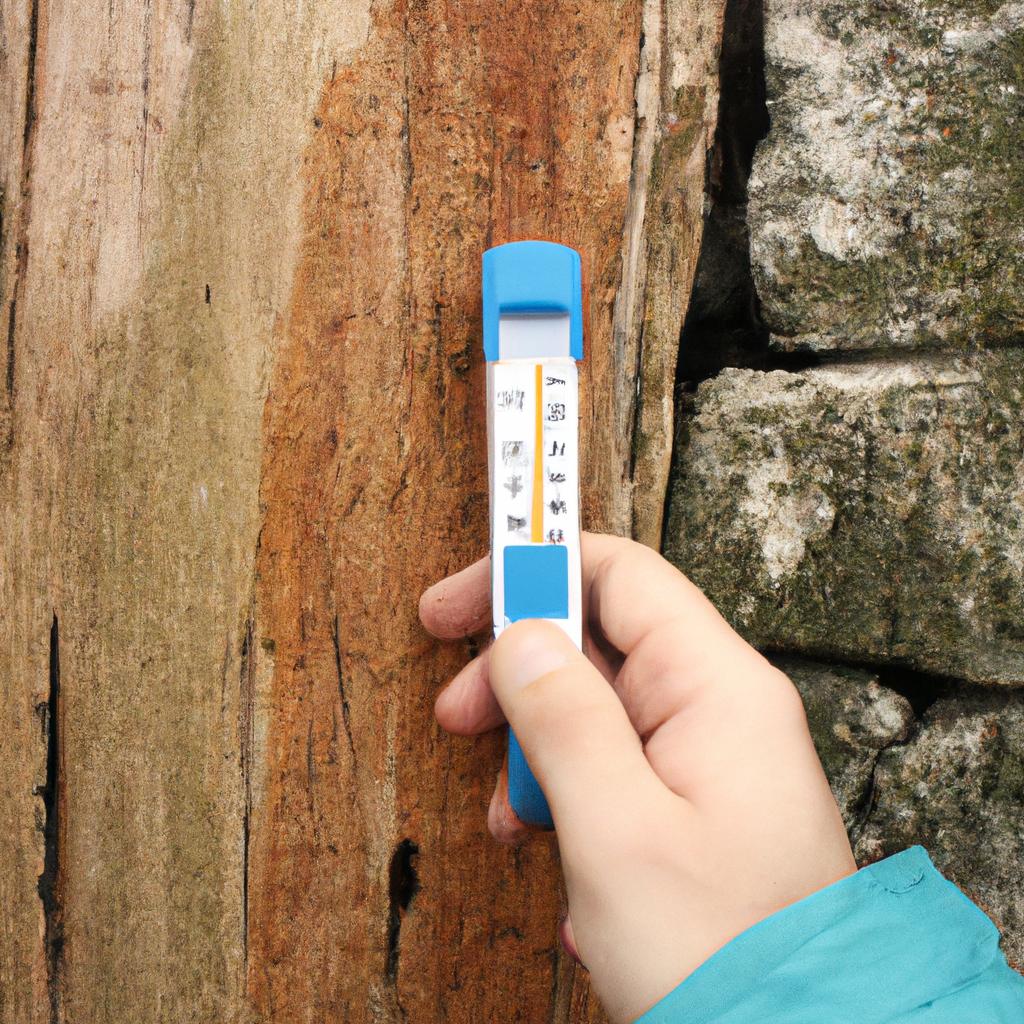
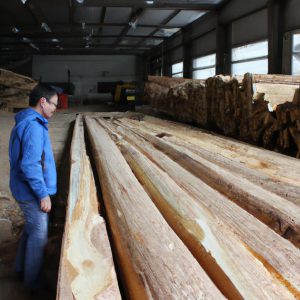

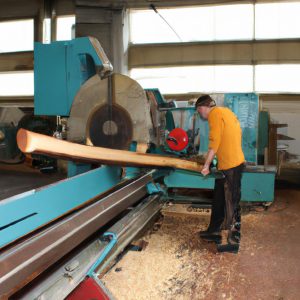
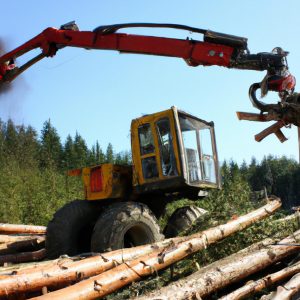
More Stories
Timber Framing: Wood Production and Engineering
Wood Engineering: Optimizing Wood Production Efficiency
Sustainable Timber Harvesting for Wood Production: A Guide for Wood Engineering